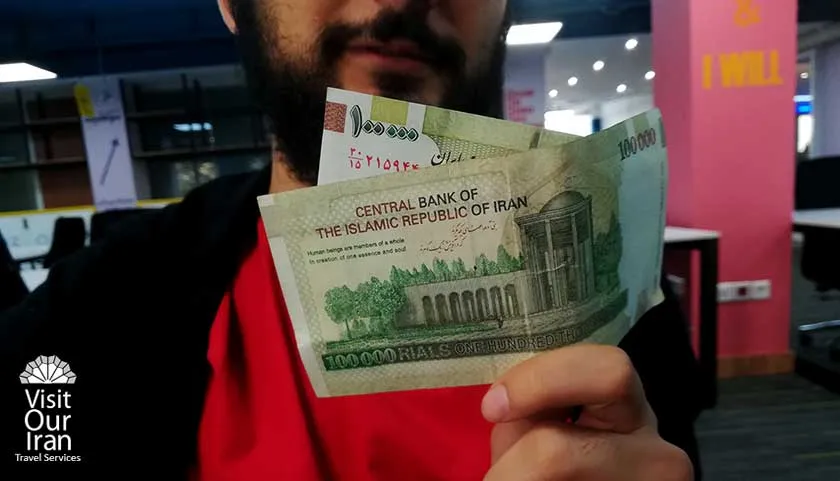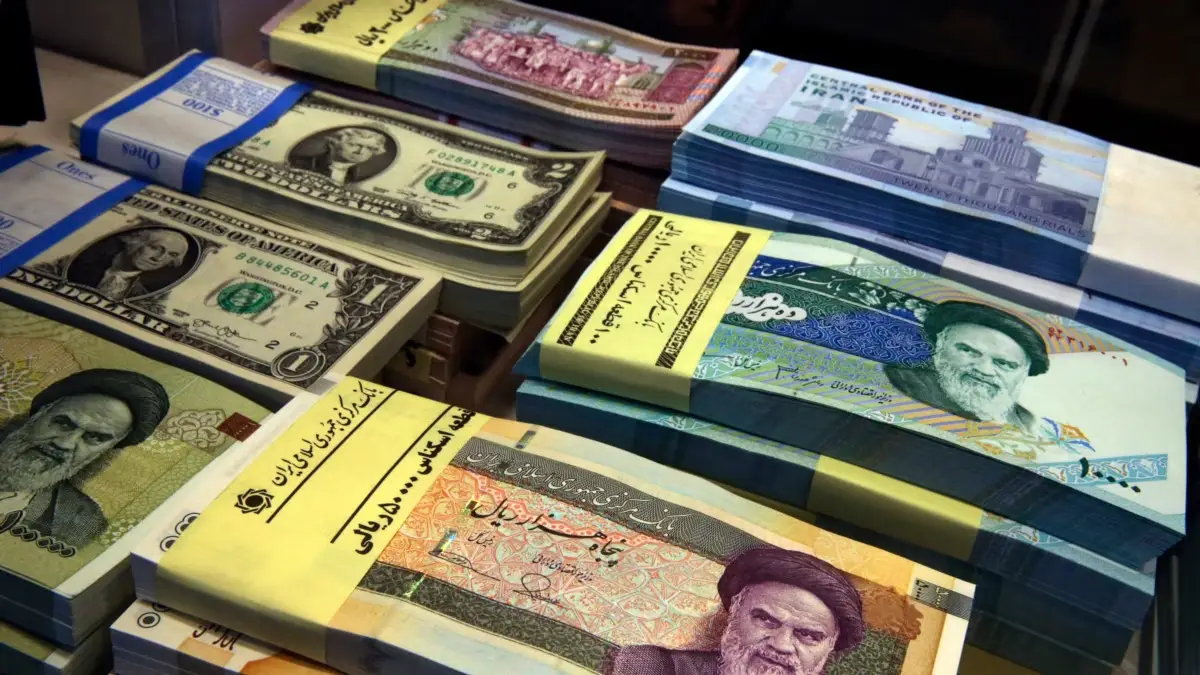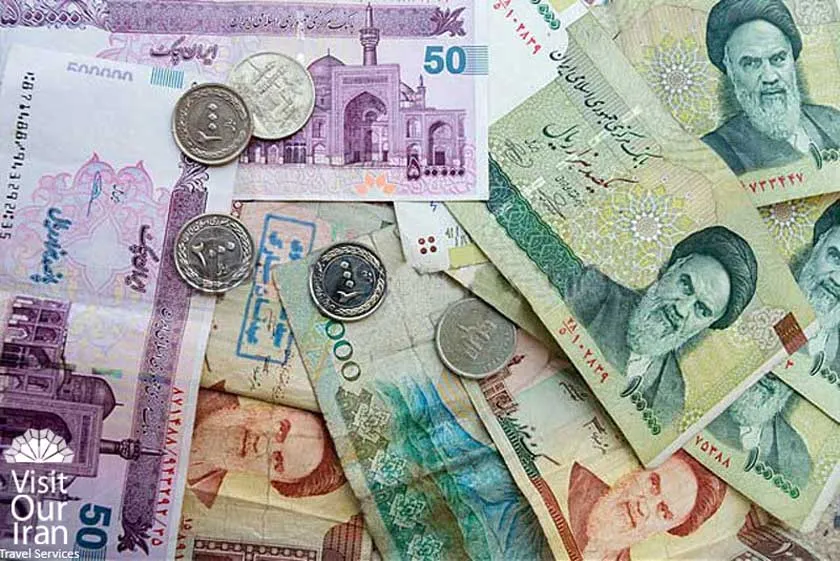How can a zero change everything? If you’re traveling to Iran, you need to understand the unique complexity of its currency system. In Iran, there are two units of currency: the rial and the toman. This can be confusing because people use both in daily life. Here’s how to navigate this tricky situation.
The official currency of Iran is the rial. You’ll see prices in rials on websites, in banking panels, and in official documents. However, in everyday conversations and in most shops, people usually talk in tomans. The tricky part is that 1 toman equals 10 rials. So, if something costs 10,000 rials, people often say it costs 1,000 tomans. That extra zero can make a big difference, and you need to be careful not to mix them up.
Are you looking for tourist debit cards?
Visit Our Iran will get you whatever you want. Email us at [email protected] or contact us through WhatAspp icon at the bottom right of the page. You can also check our Travel Debit Card Services.
Rial vs. Toman! Which One to Use?
Understanding Iran’s currency might seem difficult at first, but it’s simpler than you think. Iran has two names for its currency: the rial and the toman. The rial is the official currency, and you’ll see it on all banknotes. The toman, however, is what people use in their daily lives. It sounds confusing, but it’s manageable with a bit of practice.
Here’s the key thing to remember: 1 toman equals 10 rials. So, if you have a banknote that says 100,000 rials, you just need to drop one zero to convert it to Tomans. That means 100,000 rials is 10,000 tomans. Simple, right? Just remember this quick conversion, and you’ll be fine.
But there’s another twist. Iranians often drop the “thousands” when talking about money in everyday conversations. So, instead of 10,000 tomans, they might just say 10 tomans. It’s a shorthand that makes conversations easier. For example, if something costs 100,000 rials (or 10,000 tomans), a local might simply say it costs 10 tomans.
When you’re out shopping or dining, you’ll notice that most prices are in tomans. Menus in restaurants, price tags in supermarkets, and items in bazaars will generally be listed in Tomans. However, it’s always a good idea to double-check. Before you pay for anything, ask if the price is in rials or tomans. This simple step can save you from any confusion.

MasterCard and Visa Card in Iran
If you’re planning a trip to Iran, you need to prepare for managing your money. Here’s the deal: you can’t rely on your Visa or MasterCard to withdraw cash from ATMs in Iran. That means you’ve got to bring enough cash to cover your expenses for the whole trip.
Now, what currency should you bring? Euros, US dollars, and UK pounds are widely accepted for exchange, but regular stores won’t take them. So, your best bet is to exchange your foreign currency for Iranian rials at official banks or exchange stores.
But here’s a handy tip: if you want an alternative to carrying loads of cash, you can get a local bank card, also known as Tourist Debit Card. These cards are designed for travelers and can be obtained at international airports like Imam Khomeini Airport. All you need is your passport and visa, and you’re good to go.
Now, where can you find these exchange stores? They’re usually scattered around tourist hotspots, near banks, and especially at international airports. In Persian, they’re called ‘Sarafi,’ and your best currency exchange option.

Cryptocurrency in Iran
To facilitate money transfers, Visit Our Iran accepts cryptocurrency payments. Booking your order with Bitcoin secures your tour in seconds. For instance, if you run out of money during your travel, you can transfer Bitcoins to our wallet, and we’ll deliver cash to you in Iran. This new method makes Visit Our Iran the ‘first tour operator’ in Iran to offer such a service.
Using Bitcoin speeds up your booking process and gives you peace of mind, knowing you have a reliable way to get cash if needed. With this innovative option, your trip to Iran can be even smoother and more enjoyable. You can also use Bitcoin to purchase all essential travel services from us.
Iran Currency System
You can use Euros, Pounds, or Dollars to pay for major travel expenses like accommodation or a taxi from the airport to your hotel. But for smaller costs, you’ll need to exchange your money for Iranian currency. Some hotels might offer exchange services. Authentic currency exchange centers are also available in all major cities in Iran.
Iran isn’t connected to the world’s banking system, so you can’t rely on your international credit cards or savings accounts. This means you need to bring enough cash for your trip. Currency exchange facilities are available at Iranian international airports, and currency exchanges are also available in cities and some hotels.
Foreign tourists can get Tourist Debit Cards at the airports to make things easier. These cards are issued by Mellat, Melli, and Gardeshgari banks. They connect to Iran’s national banking network, so you can withdraw cash from ATMs using them. Tourist Debit Cards are a great alternative to carrying cash. Plus, they are rechargeable, giving you more flexibility during your trip.

Bargaining in Iran
In Iran, prices for food, public transport, groceries, and junk food with price tags are fixed and non-negotiable, just like everywhere else in the world. However, there’s room for negotiation when you’re at the bazaar buying souvenirs. But here’s the truth about bargaining in Iran: if you’re shy or not used to haggling, it can be a bit tough. Shopkeepers can easily spot tourists and might try to sell their products at higher prices.
So, don’t trust the first price you hear or buy something at first glance. Visit other stores, ask for their prices, and then decide where to purchase. Comparing rates is a great way to ensure you get a fair deal.
If you can’t reach an agreement with a seller, don’t be afraid to walk out of the store. Remember, bargaining isn’t a life-or-death battle. A good bargain happens when both parties are satisfied. Even if you end up paying more than your traveling friends, don’t worry. If you’re happy with what you bought, then it was a good deal.
Enjoy your shopping experience, and don’t forget to have fun exploring the bazaars!